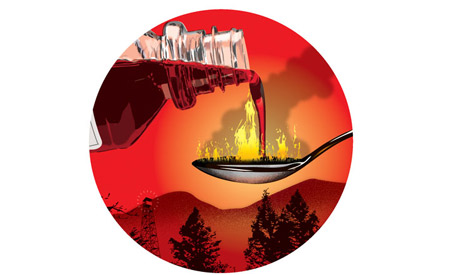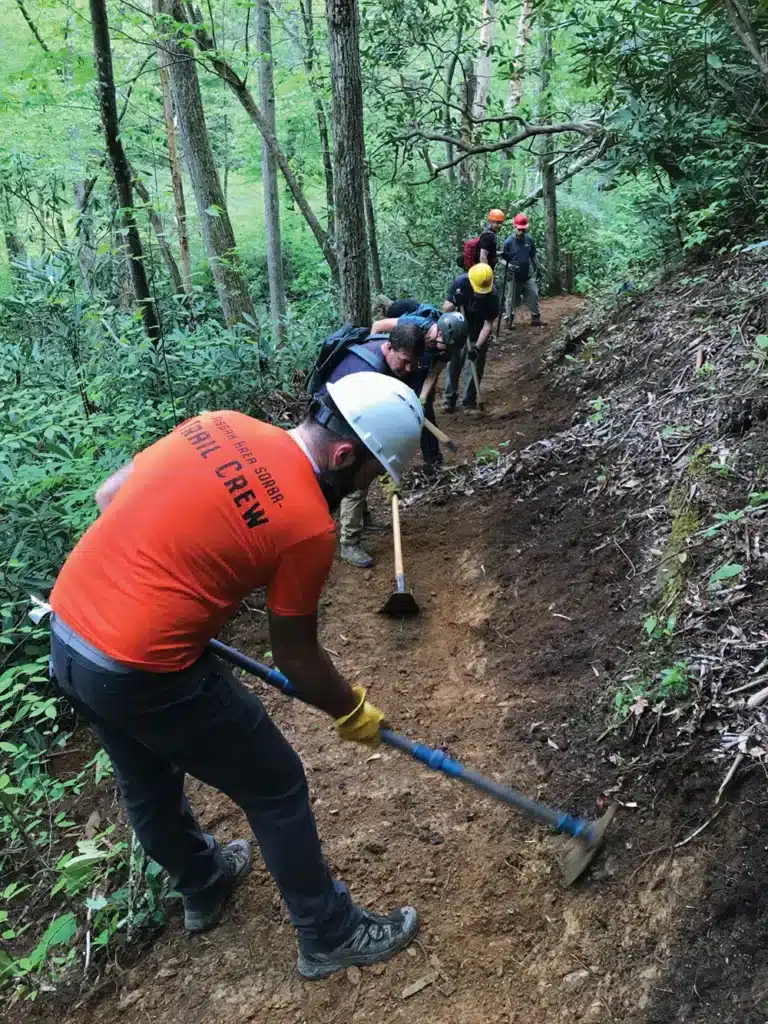The U.S. Forest Service is planning to intentionally burn sections of the Linville Gorge Wilderness to reduce fuel loads and prevent more catastrophic fires in the future. If allowed, the burns would occur in four or more separate areas at different times and be repeated every three to five years.
Should prescribed burns be conducted in the Linville Gorge Wilderness?
YES
The Linville Gorge Wilderness is a unique and magnificent landscape. The fact that it is designated as wilderness means that we are obligated to do what we can to protect its natural character and preserve its unique plant and animal communities. One of the ways we can do that is by reintroducing fire to the Gorge.
Linville Gorge is a fire-adapted ecosystem, unique to our region, with several fire-dependent species and plant communities. These plant communities are in decline and two species are federally listed as “threatened”. This means that fire has played a natural role and has shaped the Gorge throughout its history.
For the last half century, fire has been kept out of the Gorge and every fire that ignites, whether by careless people or lighting strike, has been put out. Not allowing fires to burn has caused significant damage to the wilderness character and the ecology of the area. Without fire, the gorge has unnaturally built up heavy fuel loads of underbrush, and species that inhabit wetter areas have moved in, outcompeting the more native vegetation characterized by mixed hardwood and pine forests.
These fuel loads of underbrush have also left the gorge susceptible to catastrophic wildfires which could devastate human settlements. The intensity of these fires would likely be outside of the natural range causing negative impacts to the forest communities. And, with a changing climate, we are likely to experience extended droughts and warmer temperatures, increasing the risk of catastrophic fire.
Prescribed fires are those set intentionally by professionals under strict conditions that allow fire to burn under control. This approach is necessary to reduce heavy fuel loads of underbrush, thereby reducing the risk of catastrophic wildfires. By reducing fuel loads, we will be able to allow wild fires to burn naturally without human intervention. This is the best thing for the ecosystem and for wilderness.
If we want to protect wilderness character, maintain the integrity of ecosystems, restore threatened species, prevent catastrophic wildfires, and protect local communities, we need to reintroduce and allow fire to once again play its important role in the Linville Gorge.
Ben Prater is associate executive director for Wild South.
NO
The proposed burning of the Linville Gorge Wilderness is not in the name of preservation. What is going to happen to our aquatic wildlife in the Linville River and its feeder creeks when the loose soil and soot erodes into it? As the Forest Service’s own manual on fire states, “On steep terrain, if post-fire storms deliver large amounts of precipitation, accelerated erosion and runoff can occur, even after a carefully planned prescribed fire.” With the Linville Gorge Wilderness receiving an annual rainfall of 67 inches or more, heavy erosion is sure to happen.
What about our hemlock population? It takes hemlocks 450 years to completely mature to good cone production. With most of the old growth already decimated by adelgid infestation, prescribed burns will kill the hemlocks trying to make a recovery—the same trees that the Forest Service spent thousands in taxpayer dollars to protect less than 10 years ago.
Exposure to relatively low smoke concentrations over many years can contribute to respiratory problems and cancer. In the name of profit, they are going to endanger our health.
Linville Gorge’s rugged terrain – the toughest terrain east of the Rockies – will make it extremely difficult to control fires and will put more firefighters’ lives in jeopardy. Our local businesses stand to lose much needed tourist income. And they are violating the spirit and the letter of the Wilderness Act by manipulating the wilderness with prescribed burns.
At the very least, the Forest Service should conduct an environmental impact study, as required by law, before proceeding. The Linville Gorge Wilderness is a world-class gem. There is no bringing it back once destroyed. As Teddy Roosevelt once said, “Leave it as it is. The ages have been at work on it and man can only mar it.”
Phil Phelan recently hiked 160 miles through the Linville Gorge in five days to raise awareness about the proposed prescribed burns.








